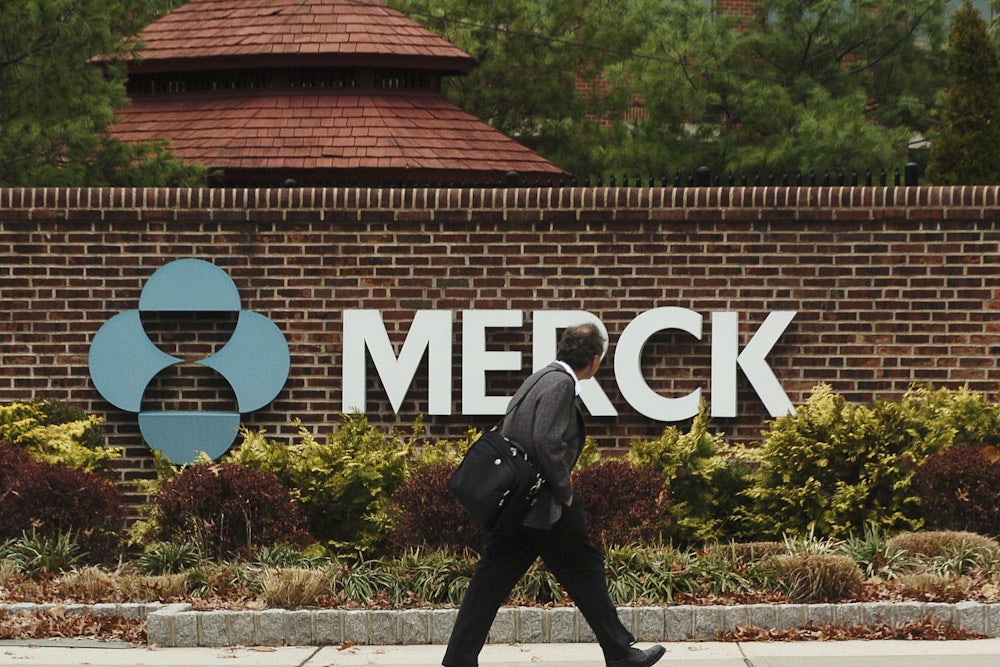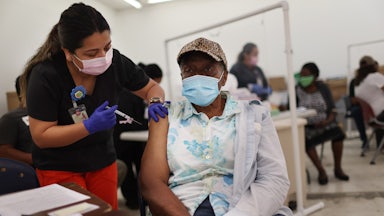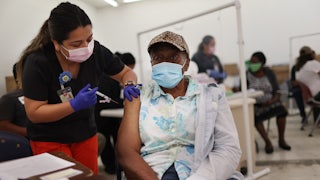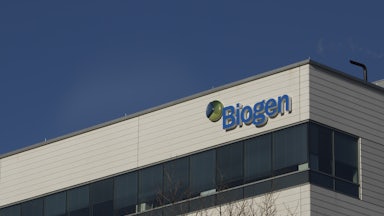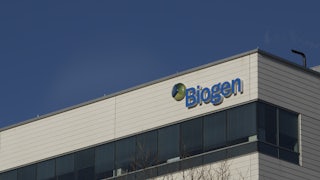Is a new dawn breaking in the fight against the global pandemic? Now that two major pharmaceutical firms have filed for emergency use authorization for new antiviral pills, we may soon have some valuable arrows in our quiver to fight Covid-19. Per company reports, a short course of Merck’s molnupiravir regimen reduces hospitalizations among infected patients by 50 percent; Pfizer’s Paxlovid curbed admissions by an eye-popping 89 percent—and neither treatment group reported any deaths. The Biden administration has reportedly pumped several billion dollars into the effort, ordering several million courses of each at around $700 a pop.
The news has brought a sizable amount of ballyhoo. Some experts have characterized the potential of these medications as “game-changing.” Whereas anyone who contracted the disease during the pandemic’s grim early days had little choice but to wait things out and hope their oxygen levels didn’t drop low enough to require intubation, antiviral treatment at the time of diagnosis might sharply reduce one’s chances of ending up on a ventilator. With over 1,000 deaths per day and some 41,000 patients currently hospitalized, such effective therapeutics stand a chance of reining in the pandemic. But these medical advancements don’t exist in a vacuum, and whether they will prove to be the tide-turning innovation that many hope they might will be determined by policy and politics. Here, without some significant changes, chances are slim that antivirals will even make it to the patients who need them most.
Translating the dramatic results from the Merck and Pfizer trials into a real-world setting won’t be easy, even if the company’s celebratory press releases hold up. For one thing, each regimen must be started within five days of symptom onset, which presents no shortage of logistical hurdles. As anyone who has gotten sick before can attest, the first day or so can easily be eaten up by genuine denial: Is my throat really scratchy? I’m always this congested, right? But the real trouble comes when it’s time to wrangle a diagnosis out of our snarl of a health care system: Nearly two years into an epoch-defining pandemic, the United States still lacks any sort of coherent testing infrastructure.
Polymerase chain reaction, or PCR, tests are considered to be a gold-standard diagnostic tool, but they are hardly ubiquitous. Patients face a lot of mundane obstacles to obtain them quickly: They may be unavailable nearby or limited to certain hours of the day where they are; to get one often requires an advance appointment. And for those who can drop everything to do so, waiting up to a few days for results could well push them beyond the tight five-day window to start antivirals. When it comes to rapid antigen tests that have become key components of transmission control in other countries, and which can be purchased at a drug store and used when needed at home, the U.S. landscape is even worse. Despite repeated pronouncements from the Biden administration, antigen tests remain barely accessible—an astonishingly negligent failure even for a country whose response effort has hardly been short of them.
As reported by ProPublica, the ever-revolving door between the Food and Drug Administration and for-profit companies—you know, the same one that triggered the approval of $55,000 snake oil from Biogen this summer—may well have contributed to foot-dragging on rapid test approval; those that did make it past the red tape are pricy and must be paid for out of pocket (to the tune of $40 each, according to my own recent CVS receipt). And good luck finding the damn things: PCR testing sites are at least listed on websites; people who need rapid tests may have little choice but to hop from drugstore to drugstore until someone has them in stock (which they often won’t, again, according to my own recent CVS visits).
The U.S. has made getting a positive Covid-19 test result within five days as tall an order as it possibly could be. And for those who do, getting on antivirals still isn’t a given. While the exact mechanism for distribution is still unclear, the tab for the groundbreaking treatment will reportedly be picked up by the federal government at no cost to the patient. But this won’t mean the process will be frictionless: Patients’ skepticism that the profit-driven health care system to which they’ve become accustomed could really be giving out free vaccines with no strings attached has reportedly driven a significant amount of vaccine hesitancy (sometimes completely rationally, given how many have been mistakenly billed for free vaccines anyway).
And the availability of free monoclonal antibodies—a therapy that reduces severe Covid-19 at rates roughly akin to antivirals—has had an overall minimal impact on the virus’s trajectory for the year or so that they’ve been available, reaching less than a third of eligible patients by late summer. While it’s true that arranging intravenous infusions is more complicated than issuing stockpiled pills, the 30- and 40-pill regimens aren’t necessarily a walk in the park, either (and taking them improperly could raise the risk of resistance, which could eventually make it preferable to take an even more complicated cocktail of multiple drugs, as in HIV or tuberculosis). At the very least, it should be uncontroversial to suggest that our piecemeal system might not be well equipped to connect patients—particularly the uninsured—with beneficial therapeutics as efficiently as it will need to in order to unleash the promise of antivirals.
And then there’s a more fundamental problem, as well: Both Pfizer and Merck tested their drugs on unvaccinated people with one or more risk factors for severe Covid-19. This makes sense, given that the unvaccinated are about 11 times more likely than vaccinated people to develop severe disease, and make up well over 90 percent of current Covid-19 deaths. But polls also show that those who still haven’t gotten a shot are increasingly a self-selecting pool of people who aren’t especially concerned about the virus—only 21 percent report seeing it as a threat to their personal health; over half say it poses less of a danger than the vaccine itself.
They’re wrong, of course, but such attitudes could easily make unvaccinated individuals also less likely to take proactive steps to access antivirals before they feel too sick. Plenty of patients, after all, only find out they even have Covid-19 when being admitted to the hospital—at which point it’s probably too late to alter the course of the illness with molnupiravir or Paxlovid. And sadly, however good the therapeutics get, they’re still nowhere as effective as the vaccine.
In short, to echo a refrain perhaps universally applicable to new advances in the fight against Covid-19, this is no silver bullet. Antivirals can indeed save lives, but only if we make the most of them: and that means making rapid tests as easy to come by as face masks, enforcing workplace safety regulations, continuing to raise vaccination rates however possible, and educating both the public and health workers about the antivirals themselves and how to get them into patients’ mouths. For these drugs to stem the tide of the pandemic, we need universality and efficiency. Twenty months into the pandemic, we’ve never managed either.
